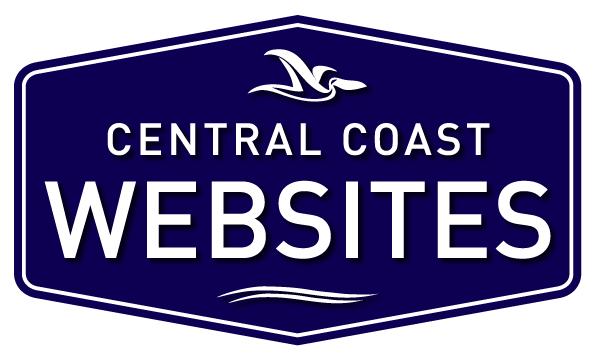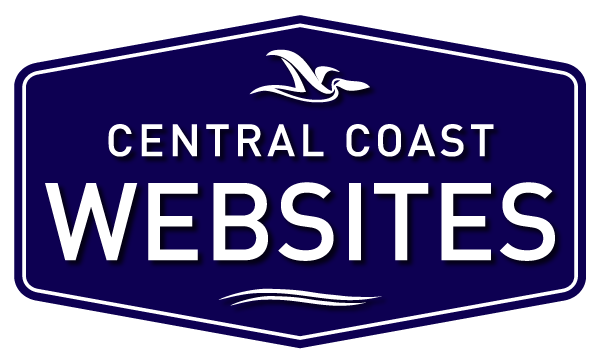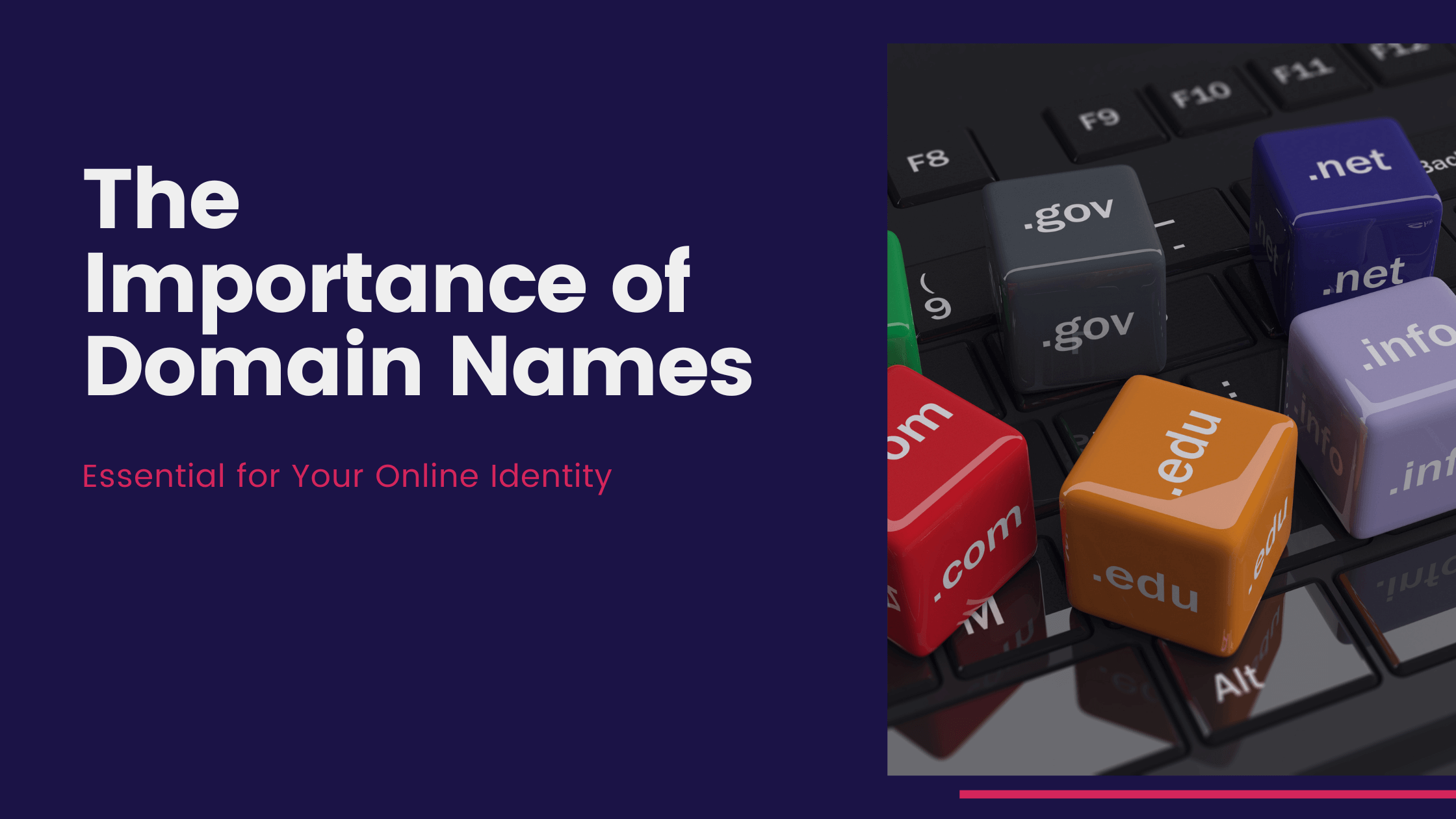Exploring the Diverse Landscape of SEO Content Types.
Key Highlights of SEO Content Types
-
1. Explore Diverse SEO Content Types
-
2. Master Optimisation Techniques
-
3. Balance SEO with Engagement
-
4. Embrace Adaptability and Experimentation
Discover a variety of SEO content, from product pages to infographics, and their unique roles in enhancing your SEO strategy.
Learn effective strategies for optimising various content types, ensuring your website stands out in search engine results.
Understand the importance of creating content that's not only SEO-friendly but also engaging and valuable to your audience.
Find out the benefits of experimenting with different content forms and adapting to evolving trends to captivate your audience.
Mastering the Art of SEO Content Creation.
Ready to dive deeper into each of these aspects and transform your SEO approach?
Keep reading to unlock the full potential of your content strategy
If you’re looking to enhance your website’s visibility and engagement, understanding the various types of SEO content is essential. SEO, or Search Engine Optimisation, plays a pivotal role in digital marketing, and the right content can significantly boost your site’s performance in search engine rankings.
In a previous post, we covered the basics of writing SEO-friendly content. If you haven’t read it yet, it’s a valuable resource that complements what we’ll discuss here. You can find it in our guide on how to write SEO-friendly content.
We aim to provide you with a comprehensive overview of different SEO content types. Whether you’re managing an e-commerce platform, maintaining a blog, or enhancing your online presence in other ways, knowing which types of content to use and how to optimise them is crucial. We’ll cover everything from product pages and blog posts to guides, videos, and more.
By the end of this article, you’ll have a clearer understanding of how to use various content forms to attract and engage your audience while improving your search engine rankings. So, let’s dive into the world of SEO content and discover how to make it work for your website.
1.Product Pages:The Foundation of E-Commerce SEO
Product pages are the cornerstone of any retail e-commerce website. They’re not just essential for showcasing your products; they also play a significant role in your SEO strategy. A well-optimised product page serves dual purposes: it can rank highly in search engine results and function as an effective Pay-Per-Click (PPC) landing page.
Start by incorporating relevant keywords into your product titles, descriptions, and meta tags. These keywords should align with what potential customers are searching for.
Use clear, high-resolution images. Images not only enhance user experience but also provide an opportunity to include keyword-rich alt text, contributing to SEO.
Provide comprehensive, unique descriptions for each product. This helps search engines understand and rank your pages while informing and persuading potential buyers.
Encourage customer reviews on your product pages. Reviews not only build trust with potential buyers but also contribute to fresh, unique content that search engines favor.
Ensure your product pages are mobile-friendly. A significant portion of online shopping is done via mobile devices, and search engines prioritise mobile-optimised sites.
Balancing SEO and User Experience.
While SEO is crucial, remember the importance of user experience. Your product pages should be intuitive, informative, and engaging. A page that is easy to navigate and provides valuable information is more likely to convert visitors into customers and can also lead to longer site engagement, which positively impacts SEO.
Product pages are a vital component of your e-commerce SEO strategy. By focusing on keyword optimisation, quality content, user reviews, and mobile-friendliness, you can create product pages that not only rank well in search engines but also appeal to and convert your target audience.
2.Blog Posts:Engaging and Authority-Building Content
Blog posts are a powerful tool in your SEO arsenal. They not only provide a platform for regular content publication but also offer an engaging way to connect with your audience. Well-crafted blog posts can attract links and shares, which are vital for building authority and improving search engine rankings.
Creating Compelling Blog Content.
Consistently publishing new blog posts keeps your site fresh and encourages repeat visits. Search engines favor websites with regularly updated content.
Experiment with different post formats, such as how-to guides, opinion pieces, industry updates, or case studies. This variety keeps your audience engaged and covers a broader range of keywords and topics.
Focus on creating quality content that provides value to your readers. In-depth, well-researched posts are more likely to attract backlinks and shares, which boost SEO.
Craft titles and headlines that are both keyword-rich and compelling to readers. This balance improves click-through rates from search results and social media platforms
Leveraging Blog Posts for SEO.
- Keyword Strategy: Incorporate relevant keywords naturally throughout your posts. However, avoid keyword stuffing; the primary goal is to create content that reads well for your audience.
- Internal Linking: Use your blog posts to create internal links to other relevant content on your site. This helps search engines understand the structure of your site and can lead to better indexing of your pages.
- Encouraging Engagement: Invite readers to comment, share, and interact with your content. Active engagement signals to search engines that your content is valuable and relevant.
Blog posts are an excellent way to establish your website as an authority in your field. They provide a platform for sharing your expertise, insights, and experiences, all while contributing significantly to your SEO efforts. By focusing on quality, variety, and engagement, you can use your blog to attract and retain a loyal audience, garner backlinks, and enhance your overall online presence.
3. Articles:The Core of Content Marketing
Articles, ranging from news stories and interviews to feature pieces, are a staple of content marketing and play a crucial role in SEO. Commonly found on newspaper- and magazine-style websites, well-written articles can significantly enhance your site’s authority and search engine visibility.
Crafting Impactful Articles for SEO.
Choose topics that are relevant to your industry and audience. Staying current with industry news and trends can help your articles resonate more with readers and search engines.
Ensure that your articles are well-researched and factually accurate. Credible and informative content is more likely to gain trust and be shared, enhancing your SEO.
Write in an engaging and accessible style. Your goal is to capture and retain the reader's interest, encouraging them to spend more time on your site and engage with your content.
While maintaining a natural flow, incorporate relevant keywords into your articles. This helps search engines understand and rank your content for relevant searches.
Enhancing Articles for Better SEO Performance.
- Captivating Headlines: Create headlines that grab attention and accurately reflect the content. A compelling headline can significantly improve click-through rates from search results.
- Visual Elements: Incorporate images, infographics, or videos to make your articles more visually appealing and break up text. These elements can also provide additional SEO benefits through alt text and file names.
- Social Sharing: Make it easy for readers to share your articles on social media. Social signals can indirectly impact SEO by increasing visibility and traffic to your site.
- Backlink Acquisition: High-quality articles have a higher chance of earning backlinks from other websites, which is a strong ranking signal for search engines.
Articles are a powerful form of content that can establish your website as a go-to resource in your field. By focusing on relevance, research, and an engaging writing style, you can create articles that not only appeal to your audience but also boost your site’s SEO performance.
4. Lists:Structured and Shareable Content
Lists are a highly engaging and shareable form of content that can play a significant role in your SEO strategy. Structured as a series of points or tips, lists (like “10 steps to writing SEO friendly Content” or “5 Must-Have Tools for digital marketers”) are easy to scan and often more clickable in search results and on social media.
Crafting Effective List-Based Content.
Structure your lists in a clear, easy-to-follow format. Numbered or bulleted lists help readers quickly grasp the main points and retain information.
Use titles that are descriptive and intriguing, making them more likely to be clicked on in search results and shared on social media.
Each point in your list should offer real value or insights to your readers. Avoid filler content; focus on providing useful and relevant information.
Maximising SEO Impact with Lists.
- Keyword Optimisation: Integrate relevant keywords naturally within your list titles and content. This helps search engines understand and appropriately rank your list articles.
- Visual Appeal: Enhance your lists with relevant images, graphics, or videos. Visual elements make the content more engaging and can provide additional SEO benefits.
- Shareability: Lists are inherently shareable, making them great for social media engagement. Encourage sharing by including social media buttons and engaging calls-to-action.
- Internal and External Links: Use your lists to link to other relevant content on your website, as well as to authoritative external sources. This improves the SEO value of your content and provides additional resources for your readers.
Lists are an excellent way to present information in a digestible and engaging format. They appeal to readers who prefer quick, actionable content and can significantly boost your content’s visibility and shareability, contributing positively to your SEO efforts.
5. Guides:In-Depth and Informative SEO Content
Guides are comprehensive pieces of content that delve deeply into a particular subject, offering step-by-step instructions or detailed information. They are incredibly valuable for SEO as they provide thorough, keyword-rich content that can attract and engage a targeted audience.
Creating Compelling Guides for Your Audience.
- Topic Selection: Choose topics that are highly relevant to your audience and offer opportunities to explore in depth. Your guide should aim to solve a problem or provide detailed insight into a subject your audience cares about.
- Comprehensive Coverage: Make sure your guide covers the topic thoroughly. The goal is to create a go-to resource that readers will find useful and informative.
- Structured Format: Organise your guide in a logical, easy-to-follow manner. Break down the content into sections or chapters, with clear headings and subheadings.
Optimising Guides for SEO.
Conduct thorough keyword research to identify terms and phrases related to your topic. Integrate these keywords naturally throughout the guide.
Consider the user experience when designing your guide. It should be easy to navigate, and you might want to offer it in different formats (e.g., single page, multiple pages, downloadable PDF).
Use your guide to link to other relevant content on your website. This not only helps with SEO but also keeps readers engaged on your site longer.
Encourage readers to take a specific action after reading your guide, whether it's signing up for a newsletter, downloading additional resources, or contacting you for more information.
Guides are a powerful form of SEO content that can establish your site as an authoritative source in your niche. By providing comprehensive, well-researched information in a user-friendly format, you can attract a dedicated audience, encourage longer site visits, and improve your search engine rankings.
6. Videos: Visually Engaging Content for Enhanced SEO
Videos have become an increasingly popular form of content, offering a dynamic and engaging way to convey information. In the context of SEO, videos can provide a competitive edge, as there are generally fewer videos than text pages on the web, making it easier to rank for certain keywords.
Leveraging Videos for Effective SEO.
- Content Ideas: Consider creating tutorials, product demonstrations, customer testimonials, or behind-the-scenes looks at your business. Select topics that resonate with your audience and add value.
- Keyword Optimisation: Include relevant keywords in your video titles, descriptions, and tags. This helps search engines understand and index your video content appropriately.
- Quality Production: Invest in good quality production, including clear audio and visuals. High-quality videos are more likely to engage viewers and be shared.
Enhancing SEO with Video Content.
Decide whether to host videos on your own site or on platforms like YouTube or Vimeo. Hosting on external platforms can increase visibility and drive traffic back to your site.
Provide transcripts and captions for your videos. This not only makes your content accessible to a wider audience but also allows search engines to crawl and index the text content.
Encourage viewers to like, comment, and share your videos. Engagement metrics can influence how search engines rank your content.
Make it easy to embed and share your videos. Embedding videos on relevant pages of your website can enhance the content and increase time spent on the site.
Videos can significantly enhance your SEO strategy by providing engaging, shareable content that stands out in search engine results. By focusing on quality content, proper optimization, and engagement strategies, you can use videos to attract a broader audience and improve your online visibility.
7. Infographics:Data-Driven and Visually Compelling Content
Infographics are a powerful tool in the SEO arsenal, especially for presenting complex data or information in a visually appealing and easily digestible format. While they can be highly shareable and attract significant attention, it’s important to optimise them properly for SEO, as their visual nature presents unique challenges.
Enhancing SEO with Video Content.
- Relevant and Informative Content: Choose topics that are both interesting to your audience and relevant to your industry. The best infographics often simplify complex data or provide insightful overviews of a topic.
- Engaging Design: Invest in a clean, professional design that makes the data easy to understand at a glance. The use of color, typography, and layout all play a role in the infographic’s effectiveness.
- Balancing Text and Graphics: While the focus is on visuals, ensure there’s enough text to convey the message clearly. Text elements also help search engines understand the content of your infographic.
Optimising Infographics for Search Engines.
Include a text-based version of the information presented in the infographic on the same page. This makes the content accessible to search engines and screen readers.
Use descriptive titles and alt text for your infographic. This helps search engines index the content and improves its visibility in search results.
Make it easy for others to embed and share your infographic. Providing an embed code and sharing buttons can increase its reach and backlinks to your site.
Actively promote your infographic through social media, email newsletters, and other channels. This can drive traffic to your site and encourage more shares and backlinks.
Infographics can be an excellent way to engage your audience and convey information in an easily digestible format. By focusing on relevant content, engaging design, and proper SEO optimisation, you can use infographics in SEO to enhance your content strategy and improve your website’s visibility in search engine results.
8. Slideshows:A Picture-Perfect Approach to SEO Content
Slideshows are a unique way to present a series of related images or visual content, and they can be particularly effective when the visual aspect is more important than text. This format is ideal for showcasing products, illustrating ideas, or telling a story through images. Properly optimised, slideshows can enhance your SEO efforts.
Creating Engaging Slideshows for Your Audience.
- High-Quality Images: Use clear, high-resolution images in your slideshows. Quality visuals are crucial for engaging viewers and conveying your message effectively.
- Relevant and Cohesive Content: Ensure the slideshow content is relevant to your audience and cohesive. Each slide should contribute to the overall narrative or theme.
- Captivating Titles and Captions: Use descriptive titles and captions for each slide. This not only provides context to viewers but also offers opportunities for keyword optimisation.
Optimising Slideshows for SEO.
Optimise image file names and use descriptive alt text for each image. This helps search engines understand the content of your slideshow and improves its visibility in image search results.
Pay attention to load times and ensure your slideshows are mobile-responsive. A fast-loading, mobile-friendly slideshow can significantly improve user experience and SEO performance.
Incorporate links within your slideshow to relevant content on your website. This not only enhances the viewer's experience but also aids in navigation and SEO.
Encourage sharing of your slideshow on social media platforms. Social signals can contribute to increased visibility and traffic.
Slideshows offer a visually appealing way to present information and can be a valuable addition to your SEO content strategy. By focusing on quality visuals, cohesive narratives, and proper optimisation techniques, you can create slideshows that captivate your audience and boost your search engine rankings.
9. Glossaries: A Resource for Niche SEO Content
Glossaries are an often-overlooked but highly effective type of SEO content, particularly for specialised industries. By providing definitions and explanations of industry-specific terms, a well-constructed glossary can attract search traffic from individuals seeking to understand these terms.
Building an Informative Glossary for Your Audience.
Start by compiling a list of terms that are relevant to your industry and commonly queried by your audience. The more specific the terms are to your niche, the more valuable the glossary will be.
Write concise, easy-to-understand definitions for each term. This not only helps your audience but also ensures that search engines can clearly interpret the content.
Keep your glossary updated with new terms and information. An up-to-date glossary is more valuable to users and can lead to repeat visits.
Optimising Your Glossary for SEO.
- Keyword Optimisation: Naturally incorporate relevant keywords within your definitions and explanations. This helps improve your glossary’s visibility in search engine results.
- Internal Linking: Use your glossary to link to related content on your site. This can enhance user experience and aid in the navigation of your website, benefiting SEO.
- User-Friendly Layout: Organise your glossary in an easy-to-navigate format, such as alphabetical order or categorised by topic. A user-friendly layout encourages longer site visits and engagement.
Glossaries can be a valuable asset for websites in specialised fields, providing a useful resource for your audience while capturing niche search traffic. By focusing on relevant terms, clear definitions, and SEO-friendly practices, you can create a glossary that enhances your site’s value and search engine performance.
10. Directories: Organising Links for Enhanced SEO
Directories are a specialised type of content that can be incredibly useful for SEO, especially for sites focusing on a particular niche or industry. A well-organised directory serves as a taxonomy of links to sites or resources related to a specific topic, offering value to your audience and aiding in search engine optimisation.
Creating Useful Directories for Your Website.
- Selecting a Niche: Choose a niche or topic that is closely related to your industry and of interest to your audience. The more specific and relevant the directory, the more valuable it will be to your users and for SEO.
- Curating Quality Links: Carefully select and curate the links included in your directory. Ensure they lead to reputable, high-quality websites or resources that offer genuine value.
- Regular Maintenance: Keep your directory updated by adding new links and removing any outdated or broken ones. Regular maintenance ensures the directory remains a reliable resource.
Optimising Directories for SEO.
Incorporate relevant keywords in the directory's titles, descriptions, and even in the categorisation of links where appropriate.
Design your directory with a clear, user-friendly structure. Categories and subcategories should be logically organized, making it easy for users to find what they're looking for.
Link to the directory from other relevant pages on your site and vice versa. This helps with site navigation and spreads link equity, benefiting overall SEO.
Promote your directory through social media, newsletters, and other channels. Encourage users to suggest additions or provide feedback, enhancing engagement and community involvement.
Directories, when well-curated and maintained, can be a valuable addition to your SEO content strategy. They not only provide a useful resource for your audience but also help in organising and showcasing relevant links, contributing positively to your website’s search engine ranking and user experience.
Embracing the Diversity with Different Types of SEO Content.
As we’ve seen, the landscape of SEO content is rich and varied, offering numerous opportunities for businesses and content creators to connect with their audience and enhance their search engine visibility. From the detailed information of guides and glossaries to the engaging appeal of videos and infographics, each type of content has its unique strengths and can play a vital role in your SEO strategy.
Remember, the key to successful SEO content lies in understanding your audience’s needs and preferences, creating high-quality content that addresses those needs, and optimising it effectively for search engines. Whether you’re focusing on product pages, blog posts, articles, lists, guides, videos, infographics, slideshows, glossaries, or directories, a well-rounded approach that incorporates various content types can significantly boost your online presence.
Don’t hesitate to experiment with different forms of content to see what resonates best with your audience and drives the most engagement. And always keep in mind that SEO is an ongoing process, requiring regular updates, optimisation, and adaptation to the ever-changing digital landscape.
We hope this guide has provided you with valuable insights and ideas for expanding and enhancing your SEO content strategy. By leveraging the diverse range of content types available, you can create a rich, engaging, and SEO-friendly experience for your users, paving the way for greater online success.





